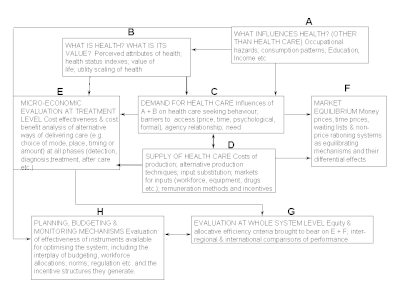Medical economics
Health economics is a branch of economics concerned with issues related to efficiency, effectiveness, value and behavior in the production and consumption of health and healthcare. In broad terms, health economists study the functioning of healthcare systems and health-affecting behaviors such as smoking.
A seminal 1963 article by Kenneth Arrow, often credited with giving rise to health economics as a discipline, drew conceptual distinctions between health and other goods. Factors that distinguish health economics from other areas include extensive government intervention, intractable uncertainty in several dimensions, asymmetric information, barriers to entry, externalities and the presence of a third-party agent. In healthcare, the third-party agent is the physician, who makes purchasing decisions (e.g., whether to order a lab test, prescribe a medication, perform a surgery, etc.) while being insulated from the price of the product or service.
Health economists evaluate multiple types of financial information: costs, charges and expenditures.
Uncertainty is intrinsic to health, both in patient outcomes and financial concerns. The knowledge gap that exists between a physician and a patient creates a situation of distinct advantage for the physician, which is called asymmetric information.
Externalities arise frequently when considering health and health care, notably in the context of infectious disease. For example, making an effort to avoid catching the common cold affects people other than the decision maker.
The scope of health economics is neatly encapsulated by Alan Williams' "plumbing diagram" dividing the discipline into eight distinct topics:
...
Wikipedia

